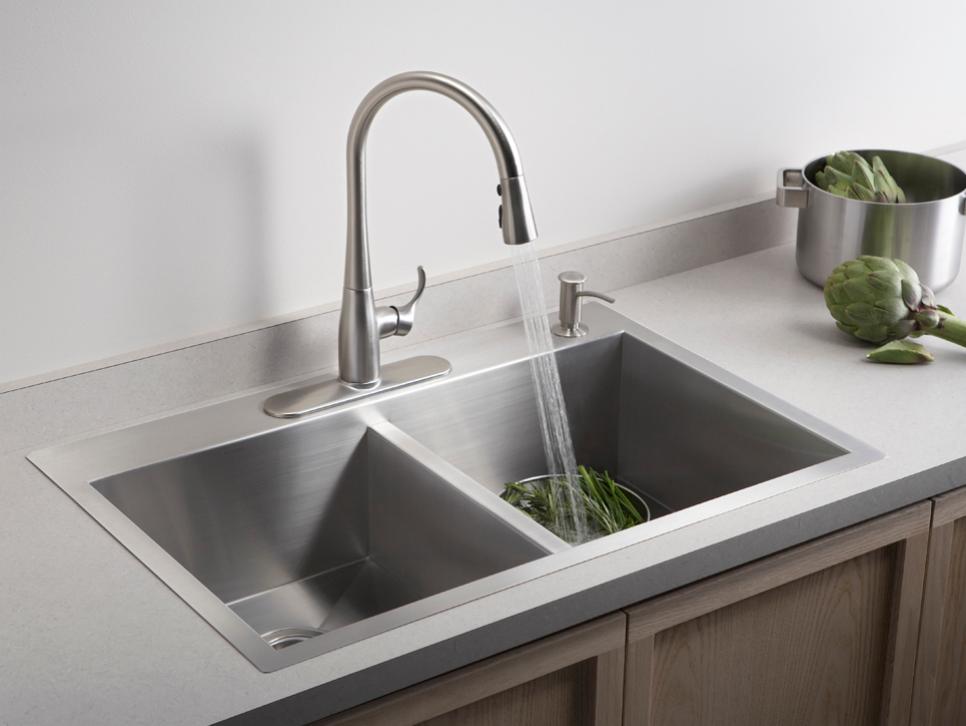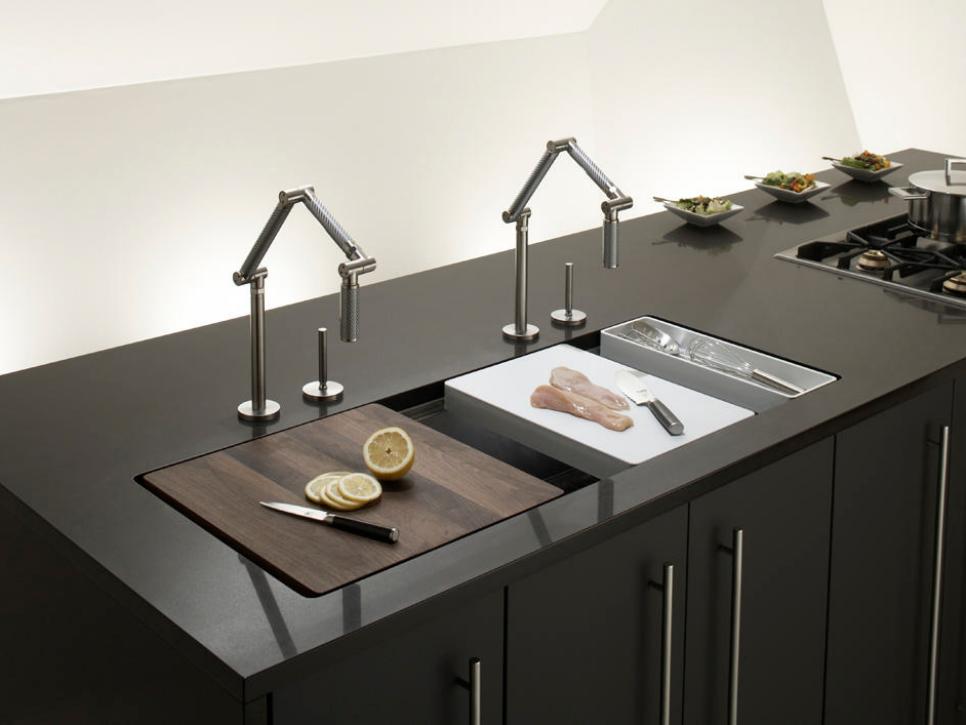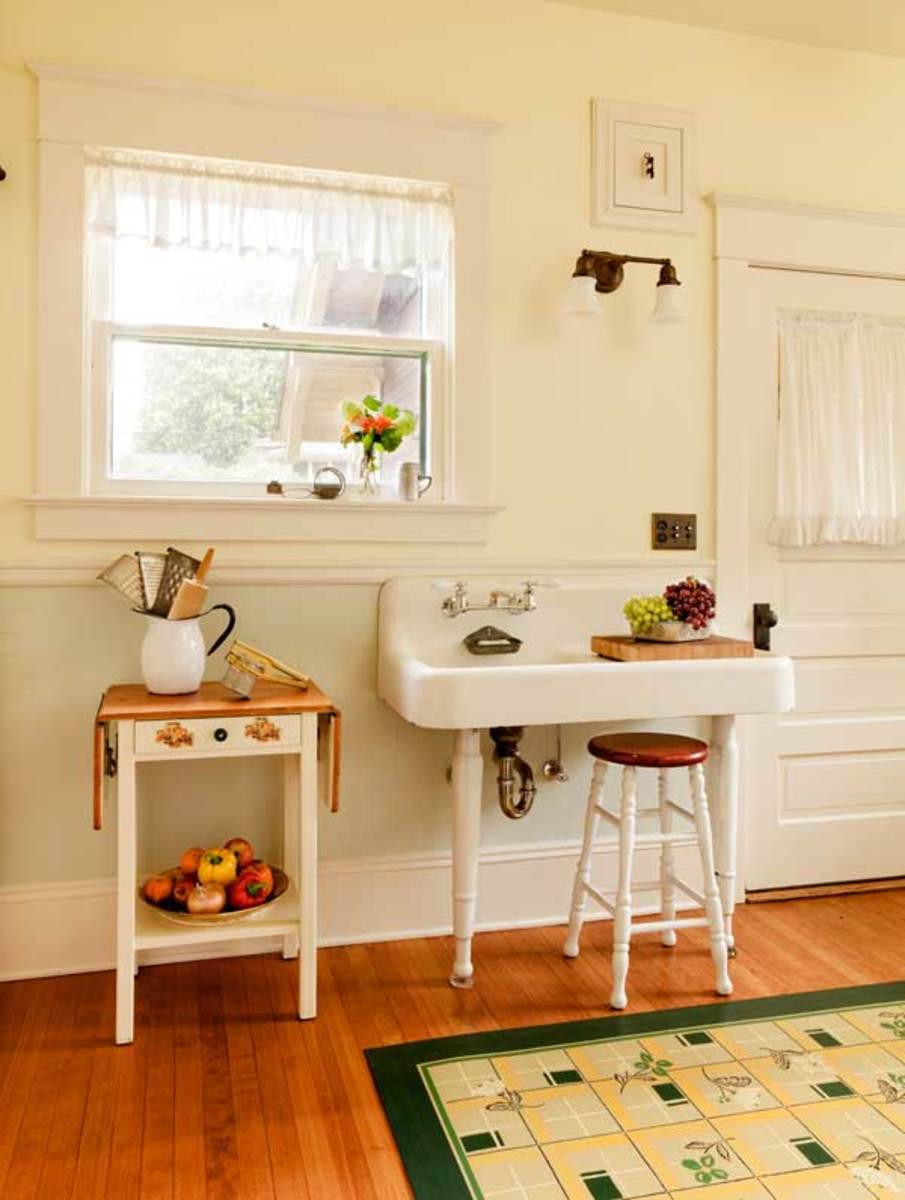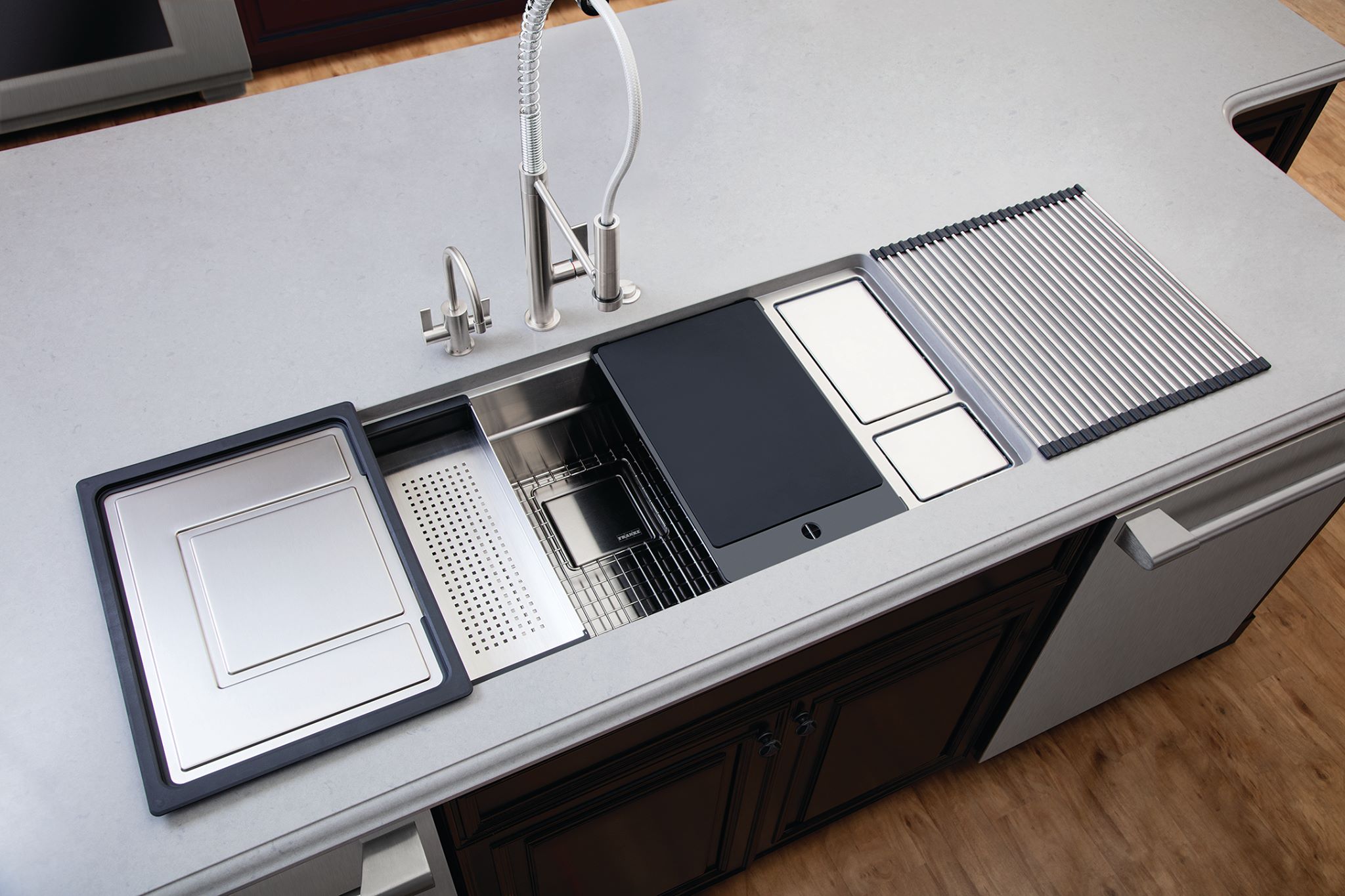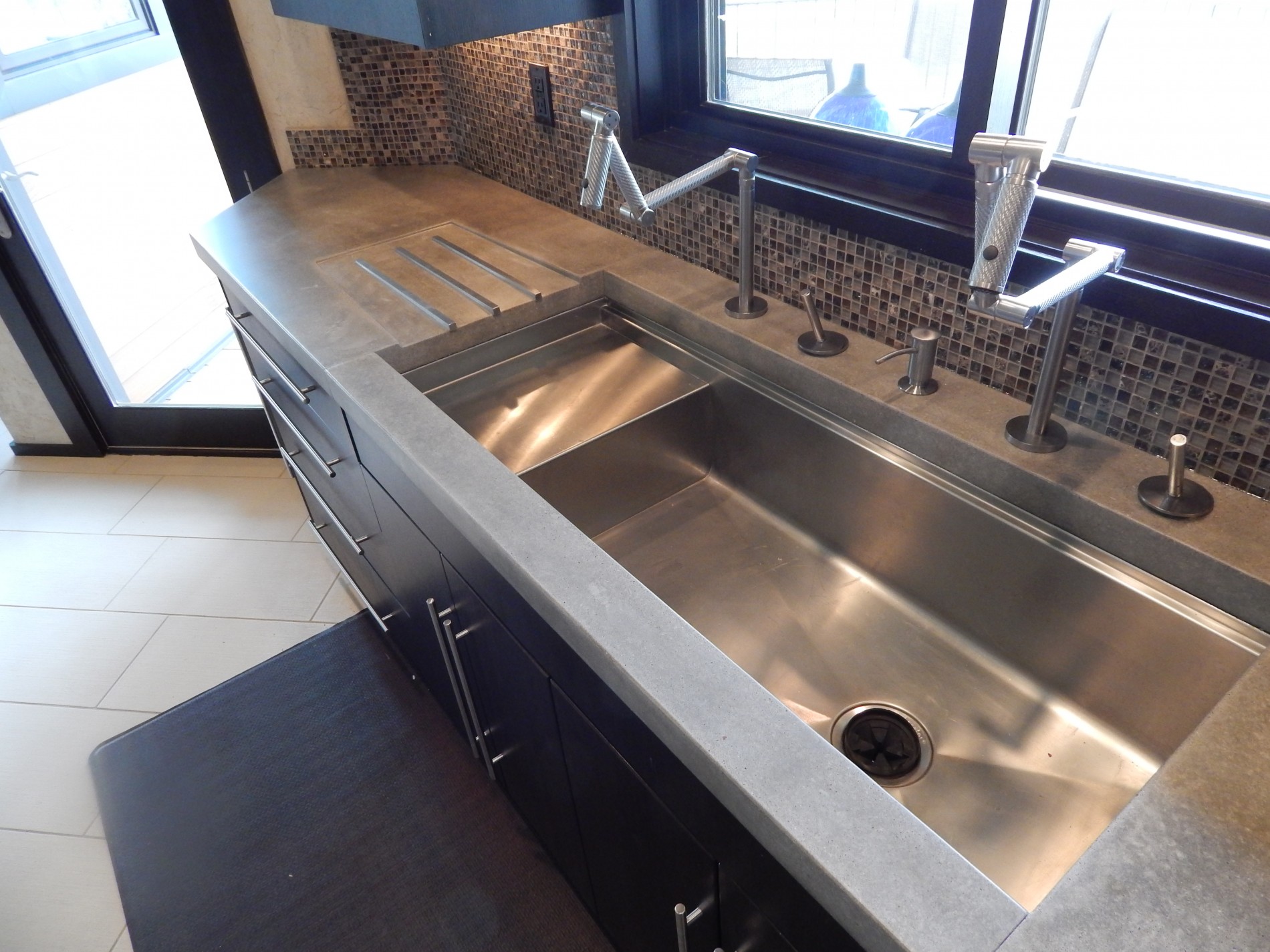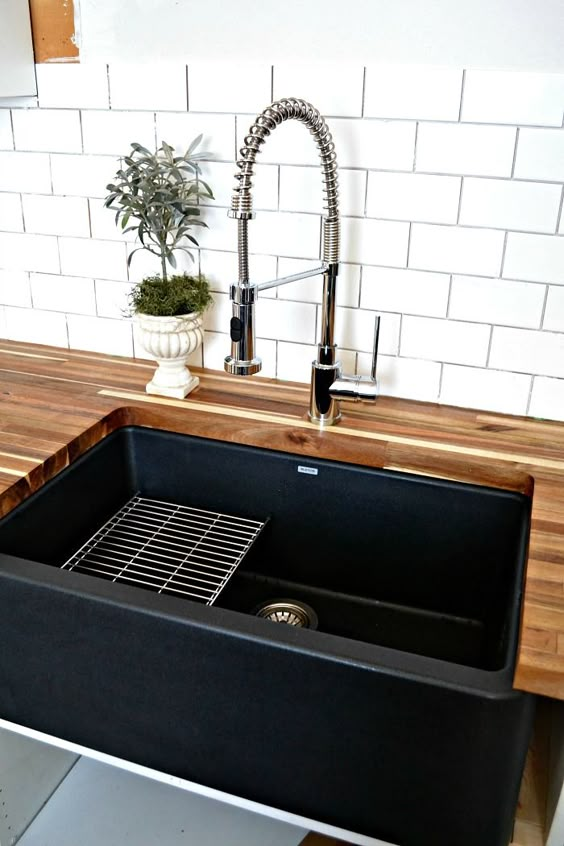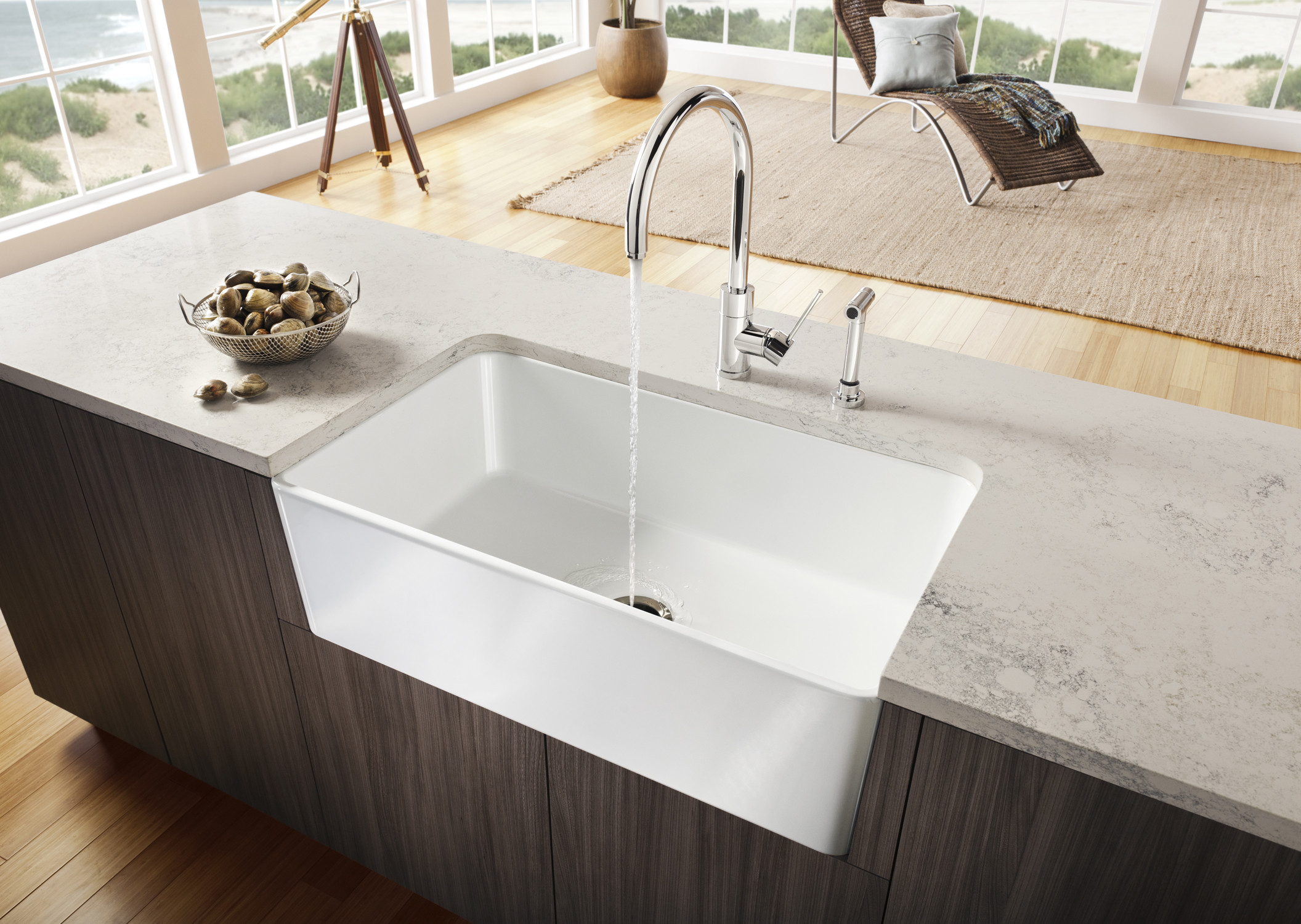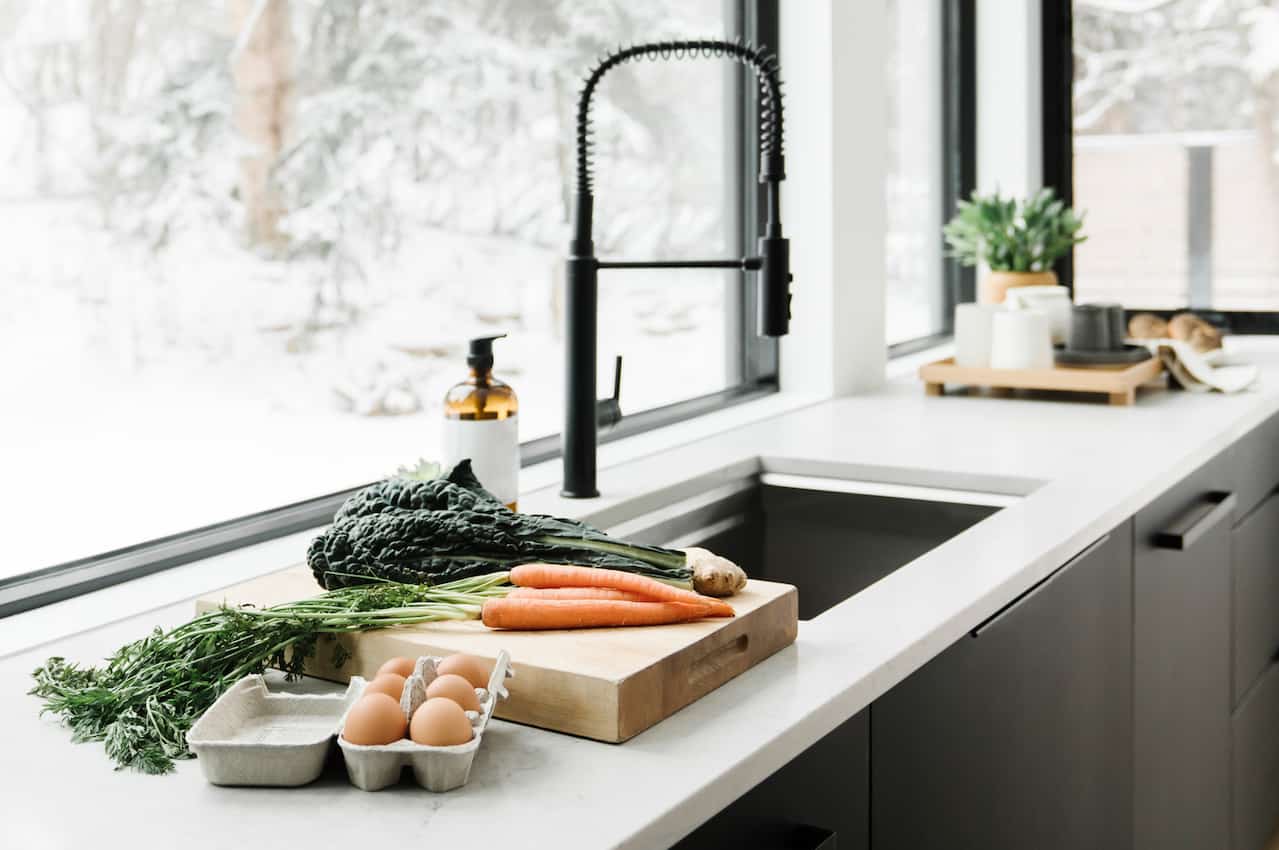The kitchen sink is an essential part of every modern kitchen, but have you ever stopped to think about its history? It may seem like a mundane fixture, but the evolution of the kitchen sink has been a fascinating journey. From its humble beginnings in the 1950s to the sleek and functional designs of today, the kitchen sink has come a long way. Let's take a closer look at how this everyday item has transformed the way we use and think about our kitchens.The Kitchen Sink: A History of the Modern Kitchen
In 1954, the kitchen sink was a simple, single basin made of porcelain or cast iron. It was usually mounted on a wooden cabinet with no storage space underneath. These sinks were functional, but they lacked any sort of design or aesthetic appeal. They were simply a place to wash dishes and prepare food.1. The First Kitchen Sink
In the 1960s, stainless steel became the material of choice for kitchen sinks. This durable and easy-to-clean material revolutionized the kitchen sink industry. It also allowed for different shapes and sizes of sinks, including double basins and deeper bowls. The introduction of stainless steel also paved the way for more modern and sleek designs.2. The Rise of Stainless Steel
In the 1980s, the undermount sink became popular. This design allowed the sink to be mounted underneath the countertop, creating a seamless and clean look. It also made it easier to clean the countertop, as there was no lip or edge to collect dirt and grime. Undermount sinks are still widely used today and are a popular choice for modern kitchens.3. The Emergence of the Undermount Sink
In the 1990s, kitchen sinks began to incorporate more features and accessories, making them not just a place to wash dishes, but a multi-functional workspace. These sinks included built-in cutting boards, colanders, and drying racks. Some even had a separate small sink for food preparation or a built-in soap dispenser. These features made kitchen tasks more efficient and convenient.4. The Multi-Functional Sink
Also known as an apron sink, the farmhouse sink has been around for centuries, but it gained popularity in the early 2000s. This style of sink extends past the edge of the countertop and is usually made of porcelain or fireclay. It adds a rustic and charming touch to the kitchen and is a favorite among homeowners looking for a more traditional style.5. The Farmhouse Sink
In recent years, technology has made its way into the kitchen sink industry. Smart sinks are equipped with features like touchless faucets, water temperature control, and built-in water filters. Some even have integrated garbage disposals and can be controlled through a smartphone app. These high-tech sinks make kitchen tasks even easier and more efficient.6. The Smart Sink
While stainless steel and porcelain are still the most popular materials for kitchen sinks, concrete sinks have been gaining popularity in recent years. These sinks are handcrafted and can be customized to fit any kitchen design. They are also extremely durable and can withstand high temperatures and heavy use.7. The Trend of Concrete Sinks
In the world of kitchen design, minimalism is on the rise. This trend has also made its way to kitchen sinks. Minimalist sinks are sleek and simple, with clean lines and no extra features. They blend seamlessly with modern kitchen designs and are a popular choice for those who prefer a more understated look.8. The Minimalist Sink
In large, open-concept kitchens, it's becoming more common to have a separate sink on the kitchen island. This allows for more workspace and makes it easier for multiple people to use the kitchen at once. These sinks are usually smaller and shallower than the main sink and are perfect for food prep or quick clean-ups.9. The Kitchen Sink Island
Sink into Style: The Evolution of Kitchen Design in 1954

The Kitchen Sink: A Symbol of Functionality and Aesthetic Appeal
 The kitchen sink has been an essential fixture in every household for centuries, but it wasn't until the mid-20th century that it truly became a focal point in kitchen design. In 1954, with the rise of modern technology and the post-war economic boom, kitchen design underwent a significant transformation. No longer just a utilitarian space, the kitchen became a hub for family gatherings and social entertaining. And at the heart of it all was the kitchen sink.
Functionality
was the primary concern when it came to kitchen design in the 1950s. With the introduction of new and innovative materials, such as stainless steel and porcelain enamel,
kitchen sinks
were now not only durable but also easy to clean and maintain. The sink's size and placement became crucial, with designers opting for larger, deeper sinks that could accommodate larger pots and pans. The introduction of the double-bowl sink also allowed for more efficient meal preparation and cleanup.
The kitchen sink has been an essential fixture in every household for centuries, but it wasn't until the mid-20th century that it truly became a focal point in kitchen design. In 1954, with the rise of modern technology and the post-war economic boom, kitchen design underwent a significant transformation. No longer just a utilitarian space, the kitchen became a hub for family gatherings and social entertaining. And at the heart of it all was the kitchen sink.
Functionality
was the primary concern when it came to kitchen design in the 1950s. With the introduction of new and innovative materials, such as stainless steel and porcelain enamel,
kitchen sinks
were now not only durable but also easy to clean and maintain. The sink's size and placement became crucial, with designers opting for larger, deeper sinks that could accommodate larger pots and pans. The introduction of the double-bowl sink also allowed for more efficient meal preparation and cleanup.
The Rise of Aesthetic Appeal
 As the kitchen became more than just a space for cooking,
aesthetic appeal
became increasingly important in kitchen design. The 1950s saw the introduction of colorful and vibrant kitchen sinks, with pastel hues and bold patterns becoming popular choices. The addition of decorative elements such as scrolled edges and intricate designs also added to the sink's visual appeal.
Kitchen sinks
also became a way to showcase personal style and taste. Homeowners were now able to choose from a variety of sink styles, from farmhouse to undermount, to fit their design aesthetic. The incorporation of accessories such as soap dispensers and sprayer faucets not only added to the sink's functionality but also enhanced its overall look.
As the kitchen became more than just a space for cooking,
aesthetic appeal
became increasingly important in kitchen design. The 1950s saw the introduction of colorful and vibrant kitchen sinks, with pastel hues and bold patterns becoming popular choices. The addition of decorative elements such as scrolled edges and intricate designs also added to the sink's visual appeal.
Kitchen sinks
also became a way to showcase personal style and taste. Homeowners were now able to choose from a variety of sink styles, from farmhouse to undermount, to fit their design aesthetic. The incorporation of accessories such as soap dispensers and sprayer faucets not only added to the sink's functionality but also enhanced its overall look.
The Modern Kitchen Sink: A Reflection of Lifestyle
 Fast forward to the present day, and the kitchen sink continues to be a crucial component of kitchen design. With the rise of open-concept living and the desire for a seamless flow between living spaces,
modern kitchen sinks
have become more than just a functional fixture. They are now a reflection of the homeowner's lifestyle and design preferences.
Innovations in technology have also brought about new features in kitchen sinks, such as touchless faucets and built-in water filtration systems. These advancements not only provide convenience but also elevate the sink's functionality and aesthetics.
In conclusion, the kitchen sink has come a long way since its humble beginnings. From a basic necessity to a statement piece, it has truly evolved into a symbol of functionality and aesthetic appeal in kitchen design. As technology continues to advance, we can only imagine what the future holds for this essential fixture.
Fast forward to the present day, and the kitchen sink continues to be a crucial component of kitchen design. With the rise of open-concept living and the desire for a seamless flow between living spaces,
modern kitchen sinks
have become more than just a functional fixture. They are now a reflection of the homeowner's lifestyle and design preferences.
Innovations in technology have also brought about new features in kitchen sinks, such as touchless faucets and built-in water filtration systems. These advancements not only provide convenience but also elevate the sink's functionality and aesthetics.
In conclusion, the kitchen sink has come a long way since its humble beginnings. From a basic necessity to a statement piece, it has truly evolved into a symbol of functionality and aesthetic appeal in kitchen design. As technology continues to advance, we can only imagine what the future holds for this essential fixture.




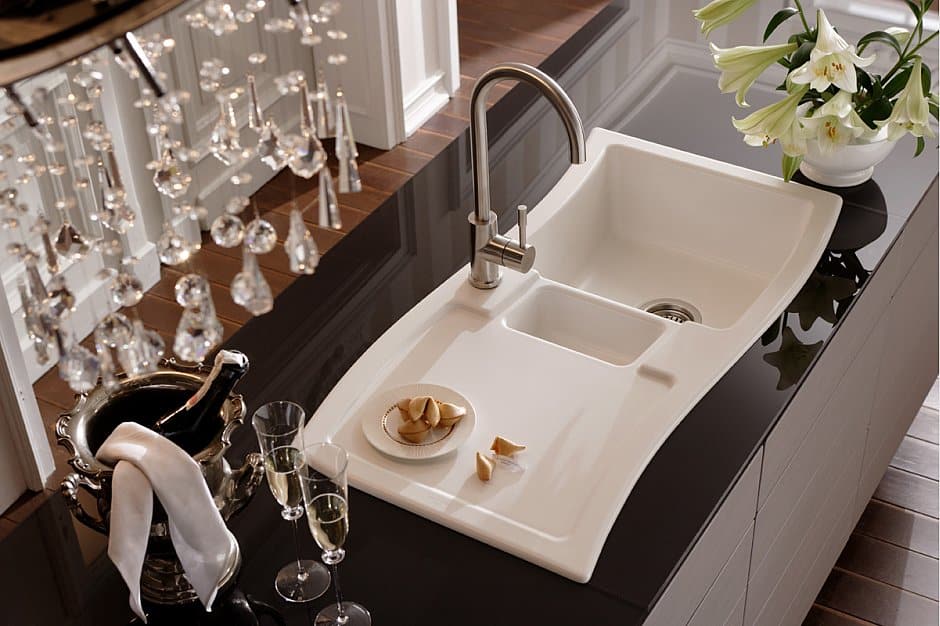

:max_bytes(150000):strip_icc()/Basic-kitchen-sink-types-1821207_color_rev-0b539306b9ef4236a136624ad2a89a4c.jpg)

